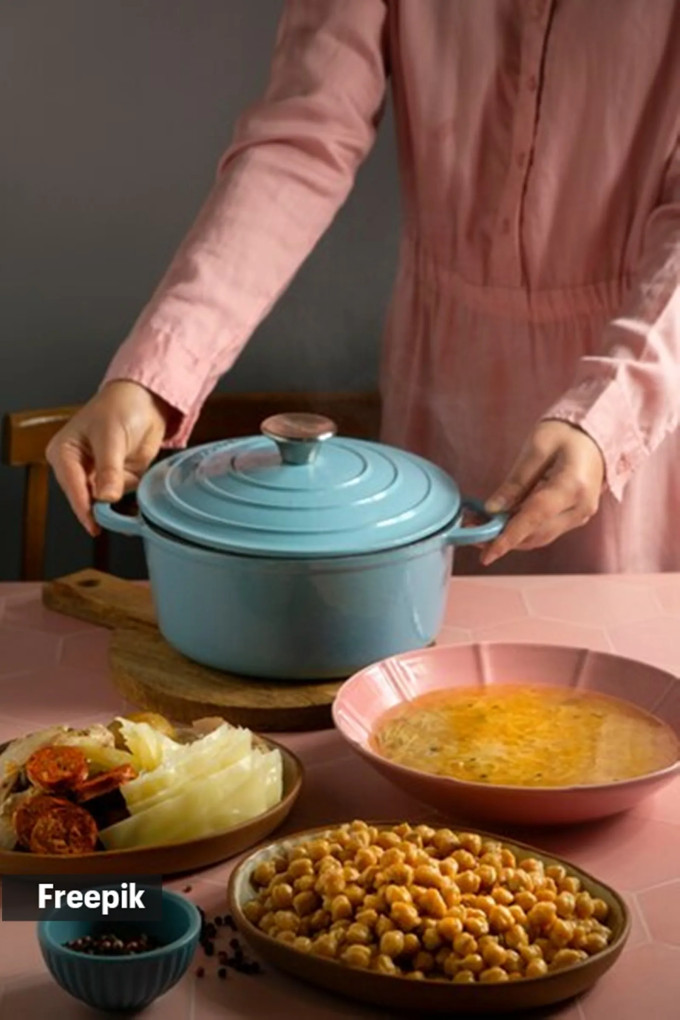Open lid cooking can result in a loss of nutrients from food, says ICMR; here’s what you should know
In its recent dietary guidelines for Indians (DGIs) aimed at promoting better food safety practices, the Indian Council of Medical Research (ICMR) has cautioned against the prevalent method of “open lid cooking” employed by many households and food establishments.
This traditional cooking technique, which involves leaving pots and pans uncovered during the cooking process, may seem like a harmless habit, but according to the ICMR, it can lead to a substantial loss of essential nutrients.

The medical body stated, “In open lid cooking, food takes a longer time to get cooked and exposure to air accelerates nutrient loss. While in closed-lid cooking, food gets cooked quickly and nutrients are better retained because of the shorter cooking time. Green vegetables and green leafy vegetables change colour during closed lid cooking but minimise nutrient loss.”
Kanikka Malhotra, consultant dietician and certified diabetes educator, agrees, “Open-lid cooking can be a culprit behind the loss of valuable nutrients in your food. These include vitamins C and B-complex vitamins. With the lid removed, they are leached out by the cooking water and transported away by the emerging steam.”
Vitamin C and folate are especially sensitive to long cooking times, she says. “Open-lid cooking frequently takes longer because heat escapes, further degrading essential nutrients.”
Effect of exposure to air during open-lid cooking accelerate nutrient loss
Air contains oxygen, which can react with some nutrients in food, Malhotra states, causing them to degrade and become less useful.
This is especially detrimental to:
Fats and oils: These are susceptible to turning rancid and forming harmful free radicals when exposed to oxygen for extended periods.
Vitamin C: This water-soluble vitamin is very sensitive to oxidation and loses potency rapidly when exposed to air.
Malhotra adds, “When cooking with an open cover, particularly with a lot of water, water-soluble vitamins and minerals can leak out of the meal and dissolve in the cooking water. This is because these nutrients are not strongly bound to the meal and are easily taken away by the evaporating steam.”
 Use a lid to trap steam and nutrients during cooking, even if the recipe calls for occasional opening. (Source: Freepik)
Use a lid to trap steam and nutrients during cooking, even if the recipe calls for occasional opening. (Source: Freepik)
Foods that are more susceptible to nutrient loss from open-lid cooking
According to Malhotra, vegetables and fruits are especially rich in water-soluble vitamins (vitamins C, B andvitamins) and antioxidants that are vulnerable to both leaching and oxidation. Leafy greens and brightly coloured vegetables are particularly affected by open lid cooking, she says.
“Fatty fish are rich in omega-3 fatty acids, which are prone to oxidation and can turn rancid with prolonged exposure to air.”
Foods less affected by open-lid cooking
Starchy vegetables, Malhotra notes, like potatoes or corn, contain fewer water-soluble vitamins and have a denser structure that retains nutrients better.
While some B vitamins can be lost when cooking meat with an open lid, the overall impact on nutrient content is less compared to vegetables due to the lower water content and different nutrient profiles, she reveals.
Cooking techniques that can help minimise nutrient loss if someone uses open-lid cooking or recipes
If you are opting to not cover your food with a lid or the recipe calls for open-lid cooking, here are some steps you can take to avoid nutrient loss, as mentioned by Malhotra:
*Use minimal water: When boiling vegetables, use just enough water to barely cover them.
*Steaming or pressure cooking: These methods use minimal water and a closed environment, minimising oxidation and leaching.
*Shorter cooking times: Cut vegetables into smaller pieces to cook faster and reduce nutrient breakdown.
*Cover whenever possible: Use a lid to trap steam and nutrients during cooking, even if the recipe calls for occasional opening.
*Quick Blanching: For vibrant coloured vegetables, consider a quick blanch. Briefly plunge them in boiling water for a minute or two, then immediately transfer them to cold water to stop the cooking process. This helps retain colour and some nutrients.
*Fresh is Best: Use the freshest vegetables possible. The fresher the produce, the higher the nutrient content to begin with, and the less you’ll lose during cooking.
Disclaimer: The copyright of this article belongs to the original author. Reposting this article is solely for the purpose of information dissemination and does not constitute any investment advice. If there is any infringement, please contact us immediately. We will make corrections or deletions as necessary. Thank you.

